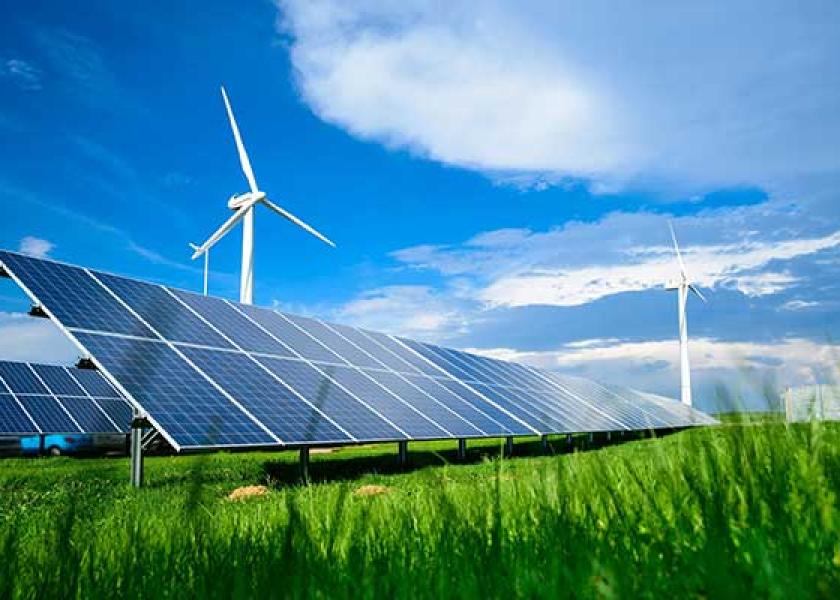USDA Invests $207 Million in Clean Energy and Domestic Fertilizer Projects

U.S. Department of Agriculture (USDA) Secretary Tom Vilsack today announced USDA will invest $207 million in renewable energy and domestic fertilizer projects to lower energy bills, generate new income, create jobs, and strengthen competition for U.S. farmers, ranchers and agricultural producers. Many of the projects are being funded by President Biden’s Inflation Reduction Act, the nation’s largest-ever investment in combating the climate crisis.
Today’s announcement was made by Secretary Vilsack at the 105th annual American Farm Bureau Federation convention in Salt Lake City, Utah. This funding advances President Biden’s Investing in America and Bidenomics agenda to grow the nation’s economy from the middle-out and bottom up, create jobs and spur economic growth in rural communities by increasing competition in agricultural markets, lowering costs and expanding clean energy.
“President Biden and USDA are ensuring farmers, ranchers and small businesses are not only a part of the clean energy economy, but directly benefitting from it,” Secretary Vilsack said. “The investments announced will expand access to renewable energy infrastructure and increase domestic fertilizer production, all while creating good-paying jobs and saving people money on their energy costs that they can then invest back into their businesses and communities.”
Today, the Department is awarding $207 million in 42 states for projects through the Rural Energy for America Program (REAP) and the Fertilizer Production Expansion Program (FPEP).
Today’s REAP awards total $157 million for 675 projects in 42 states, including more than $94 million from President Biden’s Inflation Reduction Act. The REAP program delivers on the President’s Justice40 Initiative, which aims to deliver 40% of the overall benefits of certain federal investments to disadvantaged communities that are marginalized by underinvestment and overburdened by pollution. These investments will cut energy costs for farmers and ag producers that can instead be used to create jobs and new revenue streams for people in their communities. For example:
• In Colorado’s La Plata County, a grant for $187,000 will install a solar array that, through a power purchase agreement, will benefit a wastewater treatment facility. The facility is expected to save $58,000 per year, bringing down costs for residents. It will replace 652,923 kilowatt hours or 98 percent of the plant’s energy use per year, which is enough energy to power 60 homes.
• A soybean farm in Pennsylvania will install a 1,248 kilowatt solar photovoltaic system that will save $262,000 per year. These funds can be reinvested to grow the business or create more jobs for the local community. It will also save the farm 2,814,000 kilowatt hours per year, which is enough energy to power 259 homes.
• Sturgis Meats in Meade, South Dakota will install a refrigeration system that will save $32,000 in energy costs per year. It will also save the company 255,000 kilowatt hours per year, which is enough energy to power 23 homes.
Projects financed through FPEP will help U.S. farmers increase independent, domestic fertilizer production. Today’s investments include $50 million in seven projects in seven states. President Biden committed up to $900 million through the Commodity Credit Corporation for FPEP. Funding supports long-term investments that will strengthen supply chains, create new economic opportunities for American businesses, and support climate-smart innovation. For example:
• ARE Properties LLC in Nebraska will build a fully automated fertilizer facility designed to manufacture custom products based on the results of plant tissue and soil samples. All equipment in the facility runs on natural gas with the long-range strategy to retrofit the facility for alternative energy sources in the future.
• Biogas Corporation will purchase and install a new anaerobic digestion facility in Monroe County, North Carolina. This project is expected to create 19 additional positions. The new state-of-the-art facility will produce 50,000 tons of organic fertilizer and ammonium sulfate annually, all available to farming operations or resellers supporting local producers. Through the unique combustion process, the facility projects to generate 55,000 megawatts of clean energy per year to be purchased and distributed through Duke Energy Carolinas.







